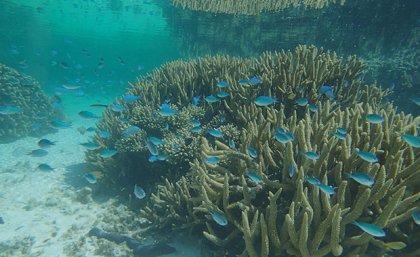For the first time, a research group from Australia has unraveled the history of climate change upheaval on the Great Barrier Reef over the past eight millennia.
 Water in the Great Barrier Reef was much dirtier eight thousand years ago. Image Credit: Gregory Webb.
Water in the Great Barrier Reef was much dirtier eight thousand years ago. Image Credit: Gregory Webb.
Headed by the University of Queensland graduate Dr. Marcos Salas-Saavedra, the research group examined rare earth elements in drilled reef cores. This unveils a deep history of wild weather.
Eight thousand years ago, extreme runoff from an intense Indian-Australian summer monsoon affected water quality in the southern offshore Reef. Water in the GBR was much dirtier, and poor water quality is known to be a major cause of reef decline around the world.
Dr. Marcos Salas-Saavedra, Graduate, University of Queensland
Salas-Saavedra continued, “But 1,000 years later, monsoonal rains eased and the water quality greatly improved. We noticed water quality declined during times of dampened El Niño Southern Oscillation frequency, which may have led to more La Niña-dominated wet climates in Queensland at those times—like the weather we have seen this year in Queensland.”
“But as El Niño-dominated weather patterns became established, southern Great Barrier Reef water quality again improved to give us the beautiful Reef we know and love,” added Salas-Saavedra.
The new data enables scientists to comprehend for the first-time what water quality was like on the Great Barrier Reef over a prolonged period.
Professor Gregory Webb stated the study offers a new and separate source of palaeoclimate data, not only for the Great Barrier Reef but possibly for reefs throughout the world.
Knowing more about how the Great Barrier Reef responded to past environmental changes is essential to help inform us how reefs can be better managed in the future. We have created a toolkit to understand subtle differences in water quality—even in offshore reefs—and it can be applied over much longer time frames where reef core material is available.
Gregory Webb, Professor, The University of Queensland
Webb added, “Importantly, this type of analysis enables us to examine how ancient water quality may have impacted coral growth rates, overall reef growth rates, and any shifts in reef ecology at the same time.”
Reef cores were retrieved from Heron and One Tree reefs by UQ’s Dorothy Hill Research Vessel before Professor Jianxin Zhao dated and examined the cores at UQ’s Radiogenic Isotope Facility.
The analysis concentrated on rare earth elements that have been conserved in microbialites — rocks made by microbes. This has been increasing across the Great Barrier Reef’s history.
The study was performed as part of an ARC-funded consortium of UQ (Professors Gregory Webb and Jianxin Zhao), the University of Sydney (Professor Jody Webster), and Queensland University of Technology (Dr. Luke Nothdurft).
Journal Reference:
Salas-Saavedra, M., et al. (2022) Holocene microbialite geochemistry records > 6000 years of secular influence of terrigenous flux on water quality for the southern Great Barrier Reef. Chemical Geology. doi.org/10.1016/j.chemgeo.2022.120871.